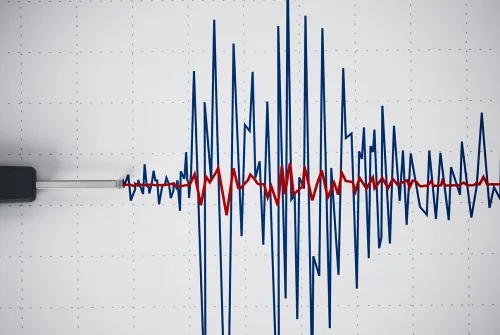Alo Yeditepe
Do Not Do These During an Earthquake
Founding President of AKUT (Search and Rescue Association) Asst. Prof. Dr. M. Ferudun Çelikmen explained what should be done during the first aid process during and after the earthquake. Asst. Prof. Dr. M. Ferudun Çelikmen stated that the correct method of protection is to take the fetal position by shrinking the target in addition to the items that will not be destroyed even if they are crushed.
How we react at that moment is just as important as the reliability of buildings in the event of an earthquake. President of AKUT (Search and Rescue Association) and Yeditepe University Kozyatağı Hospital Emergency Medicine Department Asst. Prof. Dr. M. Ferudun Çelikmen drew attention to the misconceptions about what should be done during the earthquake. Stating that the action plan will be shaped with the soundness of the building, Asst. Prof. Dr. M. Ferudun Çelikmen underlined that citizens should determine an action plan according to the buildings they live in.
"Evacuate Low-Rise Buildings in 15 Seconds"
Asst. Prof. Dr. M. Ferudun Çelikmen: "People are usually in the school, workplace, and house trio at the time of the earthquake. You should investigate whether there is any damage from previous earthquakes in your house where you sleep at night. If we live in a multi-story, high-rise building that has not been damaged before in an earthquake, which has been recently built and we have data on its stability, there is no point in running from place to place. Most of the newly built modern buildings with low floors already do not have much risk of earthquakes. However, we usually live in multi-story buildings in cities. As soon as you feel shaking on the ground floors of multi-story buildings, it is right to turn out of the exit routes. This can be adapted to all places where people are in bulk during the day, such as the market. There is time to do something in low-rise buildings. It is right to evacuate low-rise buildings in 10 to 15 seconds, even in the most devastating earthquake after the first quake. We saw this during the destruction of the Bayram Hotel in Van in the second shake. Those who left the building quickly escaped.”
“Fetal Position Saves Lives”
Explaining that it is not right to run downstairs high-rise buildings during an earthquake, Asst. Prof. Dr. gave the following advice:
"In the places where you live, you need to take shelter with the items that you will decide with our loved ones beforehand, which do not disappear even if they are crushed. For example, there are books I read under my bed. Even if the building is demolished, it forms living triangles with the help of concrete structures such as columns and beams between the horizontal layers of the building as well as objects that do not disappear even if they are crushed. Downsizing, lying on your side, fetal position, protecting our heads and heads is the right thing to do around here. People who took the fetal position at the time of the earthquake survived. As soon as the fetal position is reached, the loss of heat, which we call hypothermia, is also prevented. In the case of a crouching trap, blood rushes to your chest. There is no point in going under anything if the building is not going to collapse. If the building collapses, the desk and desk will not protect you.
No Earthquake Bag Required Water and Cell Phone Enough
Pointing out that it is not right to prepare an earthquake bag, Çelikmen: "There are cans, candles, radios that will not be useful. This has its origins in the method proposed in World War II to keep the people trapped in the subway during the bombing of London alive for days. The cans in those bags need to be renewed every 2-3 months. The most important thing you need is to have your cell phone with you. It should not be too close to you when you sleep at night, but it should be in a place where you can easily lie down. The cell phone would be very useful under the wreckage. Assuming people have cell phones with them, these people are also found on the signal. A bottle of water is enough.''
"Exercises in Schools are Practiced As If Every Building is the Same"
Stating that the method applied in earthquake drills in schools is not correct, Asst. Prof. Dr. Ferudun Çelikmen explained what needs to be done with the following words:
“There are no surviving examples of this way of getting under the table and the line. However, all the people we have recovered from the wreckage so far have somehow been people who have survived by lying on their sides in the fetal position. If the schools are located on the ground floors, you need to go out quickly. However, on the upper floors, if the tables are necessarily related to each other from the steel draw pipe, the table is directed between them. When the table is crushed, it creates a trap. Lying near the tables in the fetal position is the right thing to do. However, the tables should not be related to each other. Most plastic tables will not protect the child if the building collapses.”
“Risk Management Center Passes Single Number”
Referring to the central single number system, Asst. Prof. Dr. Çelikmen: “In many countries of the world, police, fire brigade and ambulance are coordinated from a single line. This one trick should quickly create a database of disasters. How much bread is needed? How much blood do you need... Risk management should be predominant. The basis of risk management also goes through a single number.”
“Stretch Film is Very Significant in First Aid”
Explaining that everyone should be informed and trained about first aid, Asst. Prof. Dr. Çelikmen made the following warnings:
“Everyone should have first aid knowledge. First aid is very important in disasters. The person who saves the most people in disasters is the closest to the person. It is necessary to have disaster information not only for disasters but for all kinds of emergencies. The contents of the first aid kits also need to be handled. There are unnecessary ingredients in them. Stretch film, for example, is a very important material in first aid. But we do not see that in any first aid kit. Stretch film is the material to be used in earthquakes, where you can easily wrap the patient. First aid kits need to be reviewed."
Press Coverage: hurriyet.com | cnnturk.com | posta.com | oncevatan.com



